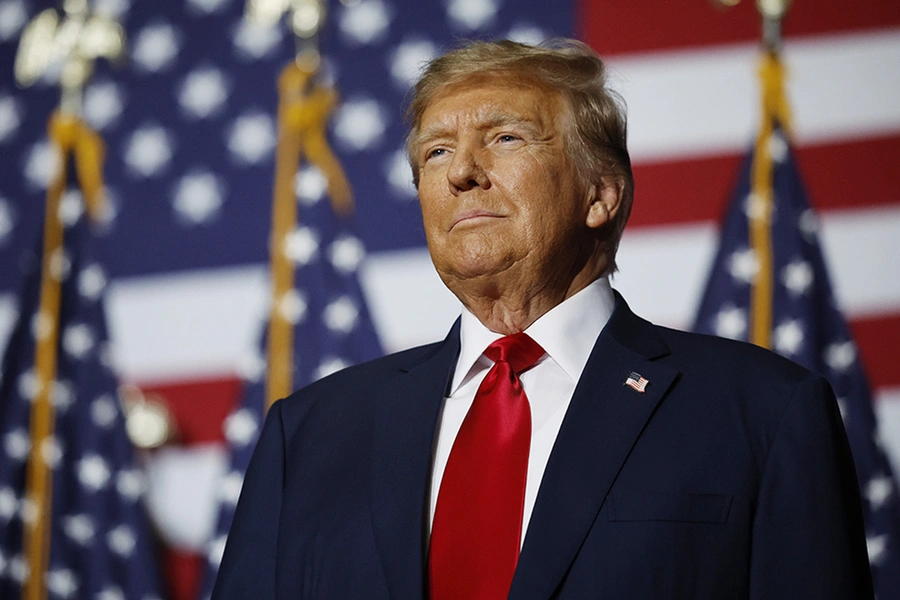Former President Donald Trump has won the presidential race, making him the 47th president of the United States of America. Let’s take a look at AI policies and initiatives during Donald Trump’s presidency from 2017 to 2021 that shaped his administration’s approach to artificial intelligence and its implications for the healthcare sector in the coming years.
Key Developments in AI Policy During Trump’s Administration
2018: Foundations of AI Policy
In May 2018, the Trump administration hosted a summit on Artificial Intelligence for American Industry, which gathered government officials, academic leaders, and business executives to discuss the potential of AI and the necessary policies to maintain the United States’ competitive edge. The summit addressed challenges related to workforce development, regulatory hurdles, and the integration of AI across different sectors, including healthcare, transportation, and manufacturing.
February 2019: The American AI Initiative
A significant milestone in AI policy occurred in February 2019 when Trump signed Executive Order 13859, launching the American AI Initiative. This executive order established a framework to promote AI research and development in the U.S. and directed federal agencies to prioritize AI investments. The initiative identified five key lines of effort:
- Increasing AI Research Investment: The executive order aimed to double nondefense AI research and development funding over a period of two years, thereby enhancing the nation’s AI capabilities.
- Unleashing Federal AI Computing and Data Resources: It called for better collaboration among federal agencies to optimize the use of government data and computational resources for AI research.
- Setting AI Technical Standards: The initiative sought to establish clear guidelines and technical standards for AI technologies to ensure safe and effective implementation.
- Building America’s AI Workforce: Recognizing the importance of skilled workers in AI, the initiative emphasized workforce development, advocating for education and training programs tailored to AI-related jobs.
- Engaging with International Allies: The executive order encouraged collaboration with international partners to promote best practices and research cooperation in AI.
January 2020: National AI Initiative Act
The American AI Initiative was further solidified with the passage of the National AI Initiative Act, signed into law in January 2021. This act created the National Artificial Intelligence Initiative Office, which serves as the central hub for federal coordination of AI research and policymaking. The office’s responsibilities include facilitating collaboration among government, academia, and industry, as well as overseeing the implementation of the national AI strategy.
December 2020: Executive Order on Trustworthy AI
In December 2020, Trump signed Executive Order 13960, which promoted the use of trustworthy AI in the federal government. This order outlined principles for federal agencies regarding the ethical use of AI, emphasizing transparency, accountability, and public trust. It mandated that agencies catalog their AI use cases and improve their implementation expertise, reflecting a commitment to responsible AI deployment.
Establishment of the AI Center of Excellence
As part of the push to integrate AI into government operations, the General Services Administration (GSA) established the AI Center of Excellence in September 2019. This initiative aimed to support federal agencies in adopting AI technologies by providing best practices and facilitating the sharing of tools. The AI Center of Excellence was later codified into law through the AI in Government Act of 2020, further institutionalizing these efforts.
Implications for the Future of AI Under a Second Trump Presidency
Under Donald Trump’s re-election, several implications for AI policy may emerge based on his previous initiatives and the current political landscape.
Continued Focus on Innovation and Investment
There is a high likelihood that he will continue to prioritize innovation in AI. His administration previously committed to substantial investments in AI research and development, aiming to double funding over two years. A renewed emphasis on public-private partnerships could further stimulate innovation in the AI sector. According to a report by the White House Office of Science and Technology Policy, the U.S. government has invested approximately $1.5 billion in AI research annually, a figure that could increase under a pro-innovation administration.
A Regulatory Framework that Favors Flexibility
Trump’s administration has indicated a preference for a “light touch” regulatory approach to emerging technologies, including AI. This perspective aligns with broader Republican sentiments advocating for minimal regulation to foster innovation. Should Trump regain office, it is likely that he will continue to pursue a strategy that minimizes regulatory burdens on AI development. This approach may include delegating regulatory responsibilities to Congress, emphasizing that any new regulations should promote innovation rather than hinder it.
Addressing Workforce Development
As AI technologies evolve, workforce development remains a critical area of focus. The previous administration emphasized the need for educational and training programs to prepare workers for careers in AI and related fields. Continued efforts to enhance STEM education and vocational training could be anticipated, responding to the demand for skilled professionals in the AI sector. Initiatives to enhance STEM education and vocational training could be expanded to address the growing demand for skilled professionals in the AI field. Recent data from the Bureau of Labor Statistics indicates that employment in computer and information technology occupations is projected to grow by 11% from 2019 to 2029, significantly faster than the average for all occupations.
Enhancing National Security Measures
Given the strategic importance of AI in national security, Trump’s administration may prioritize policies that address security concerns related to AI technologies. This could involve increasing funding for AI research in defense applications and fostering collaborations with international allies to promote safe AI practices. The Department of Defense has already recognized the critical role of AI in military applications, highlighting the need for robust policies to ensure the ethical use of AI technologies in defense contexts.
Balancing Innovation with Ethical Considerations
While Trump’s administration has focused on promoting AI innovation, there is an increasing recognition of the need to address ethical considerations surrounding AI. Issues such as bias in AI algorithms, data privacy, and accountability are gaining traction in public discourse. If Trump is re-elected, his administration may need to balance the push for rapid AI adoption with the imperative to address these ethical concerns. Recent studies have shown that nearly 80% of Americans are concerned about the potential for AI to exacerbate existing biases, underscoring the need for responsible AI governance.
Internal Divisions Within the Republican Party
While there is a general consensus among Republicans regarding the importance of AI innovation, internal divisions may influence specific policy directions. Some factions within the party advocate for more stringent regulations to address ethical concerns, while others emphasize the need for minimal oversight to foster growth. These differing views could lead to a complex landscape for AI regulation, with potential debates over the best approach to balancing innovation with ethical considerations.
Donald Trump’s presidency saw the introduction of several significant initiatives related to artificial intelligence, establishing a framework for future policy development. His administration’s focus on innovation, investment, and a flexible regulatory environment set a precedent that may continue if he were to regain office.
The implications of these policies could shape the future of AI in the United States, influencing various sectors and the lives of many Americans. As AI continues to evolve, ongoing engagement among government officials, industry leaders, and the public will be essential to navigate the multifaceted challenges and opportunities presented by this transformative technology. The decisions made by future administrations will have lasting effects on the landscape of AI, impacting everything from economic growth to ethical governance.
Are you interested in how AI is changing healthcare? Subscribe to our newsletter, “PulsePoint,” for updates, insights, and trends on AI innovations in healthcare.




